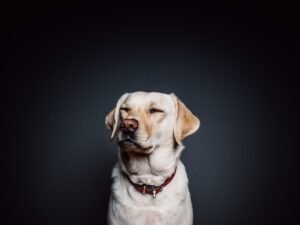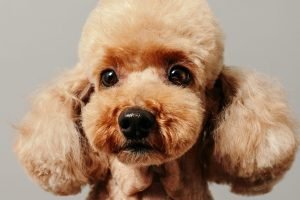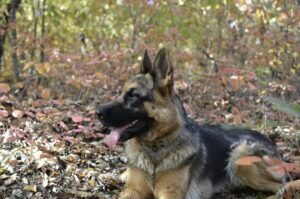Still Bathing Your Dog Wrong?
You Might Be Making These Common Mistakes!
Think giving your dog a bath is just about getting them wet, lathering up, rinsing clean, and drying? You might be surprised. Many common bathing habits actually hide pitfalls that can harm your dog’s health. For those of us with beloved canine companions, understanding scientific bathing methods is essential. It not only keeps your pet clean but also prevents common skin issues and discomfort.
Today, DogProfs will reveal several common bathing blunders and offer expert advice to ensure your furry friend can stay healthy and happy by your side.
-800x450.jpg)
Mistake #1: How Often Should Your Dog Be Bathed? "The Cleaner, The Better"?
CommonMisconception:
Many owners believe frequent bathing is essential to keep dogs clean, especially if they have an odor or shed a lot.
DogProfs Advice:
Most dogs don’t need weekly baths! Frequent bathing strips away your dog’s natural skin oils, which form a crucial protective barrier for their skin and coat. Once this barrier is compromised, their skin can become dry, itchy, and even more susceptible to bacterial and fungal infections, potentially worsening shedding or odor issues.
Suggested Frequency:
Most healthy dogs: Typically, every 4-6 weeks is sufficient.
Short-haired or less active dogs: Can go longer, even 2-3 months.
Long-haired or active dogs: May need a bath monthly, depending on their activity level and coat type.
Dogs with skin conditions: Strictly follow your veterinarian’s recommended bathing frequency and specialized products.
Special circumstances: If your dog rolls in mud or gets visibly dirty, targeted cleaning or an extra bath when necessary is acceptable.
Mistake #2: Can You Use Human Shampoo or Soap on Dogs? "Aren't They All Just Cleaners?"
Common Misconception:
Believing dog skin is similar to human skin, making household shampoos or body washes convenient options.
DogProfs Advice:
Never use human shampoos, soaps, or dish soap on your dog! Human and dog skin pH levels are vastly different. Human skin is slightly acidic (around pH 5.5), while dog skin is typically between pH 6.5 and 7.5, closer to neutral or slightly alkaline.
Disrupting your dog’s skin pH balance, damaging their protective layer, causing dry, itchy, flaky, or red skin, and even leading to severe skin inflammation and infections.
The Right Choice:
Always opt for pet-specific dog shampoo designed for canines. These shampoos are formulated with a pH balanced for dog skin and contain ingredients beneficial for their coat and skin (like oatmeal, aloe vera). For dogs with sensitive skin or specific coat needs, choose fragrance-free, hypoallergenic, or moisturizing shampoos.
Mistake #3: Focusing Only on Fur Cleaning, Neglecting Rinsing and Drying? "Just Rinse Off, Air Drying Is Healthier?"
Common Misconception:
Believing that as long as the suds are gone, the dog is clean, or that air drying is better for their coat.
DogProfs Advice:
Thorough rinsing and complete drying are the most easily overlooked, yet most critical, steps in bathing.
Importance of Thorough Rinsing: Any shampoo residue left on the coat and skin can cause irritation, itching, and flaking. Ensure you rinse your dog’s body thoroughly with running water until you feel no slippery shampoo residue. For long-haired dogs, part the fur to rinse down to the skin.
Importance of Complete Drying: Especially for dogs with dense undercoats or longer fur, incomplete drying leads to dampness, promoting bacteria and fungal growth, which can cause Hot Spots, skin infections, and unpleasant odors.
Tools: We recommend using a pet-specific forced-air dryer/blower. These provide powerful airflow with controllable temperatures, effectively drying even dense undercoats. If you use a human hairdryer, always use cool or low-heat settings and keep it at a safe distance to avoid burning your dog’s skin.
Technique: While drying, use a comb or your hands to part the fur, ensuring every layer is dried, especially moisture-prone areas like armpits, belly, and between the paw pads.
Mistake #4: Water Temperature Doesn't Matter? "Close Enough Is Fine."
Common Misconception:
Using your usual shower water temperature for your dog, or thinking dogs have tough skin and aren’t sensitive to hot or cold.
DogProfs Advice:
Your dog’s skin is more sensitive than yours, and their body temperature regulation differs. Bath water should be kept at a mild, comfortable temperature.
Suggested Water Temperature: Around 37-39 degrees Celsius (98-102 degrees Fahrenheit), which is close to or slightly above your dog’s body temperature. Test the water with your elbow or a thermometer; it should feel warm, not hot.
Water that’s too hot: Can burn your dog’s skin, cause blood vessels to dilate, and even lead to heatstroke.
Water that’s too cold: Can make your dog uncomfortable and even lead to them getting sick.
Breed-Specific Bathing Tips for Common Dog Breeds
Understanding your dog's breed-specific coat structure and skin condition is key to an effective bathing routine. Here's a look at common breeds in the US and their unique grooming considerations:

Golden Retrievers & Labrador Retrievers
- Coat Characteristics: Possess a dense double coat (undercoat); the outer coat is water-resistant, and the inner undercoat provides insulation and sheds heavily
- Bathing Challenges: Their dense undercoat easily traps dirt and, once wet, takes an extremely long time to dry thoroughly. If the undercoat remains damp, it’s highly prone to bacterial and fungal growth, leading to Hot Spots
- DogProfs Advice
- Thorough Pre-Bath Brushing: Before bathing, always use an Undercoat Rake to thoroughly brush, removing as much loose and dead undercoat as possible. This significantly reduces bathing and drying time and helps shampoo penetrate better.
- Deep Rinsing: Their double coat absorbs a lot of shampoo, requiring longer rinsing than other breeds. Ensure you rinse off all residue until the water runs clear and the fur feels squeaky clean, not slippery.
- Powerful Drying is Key: Use a pet-specific forced-air dryer or a high-powered human hairdryer (on cool/low heat) to blow out the undercoat, ensuring no dampness remains deep within the fur, especially on their thick areas. This is crucial for preventing skin issues.

Poodles & Bichon Frises
- CoatCharacteristics: Non-shedding breeds with continuously growing, curly, and very dense fur that easily mats and felts.
- Bathing Challenges: If the coat is matted before bathing, water will tighten the mats, making them nearly impossible to brush out afterward. Incomplete drying also contributes to skin problems
- DogProfs Advice
- De-Matting Before Bathing is a Must: This is the most critical step! Bathing a matted dog will only tighten the mats, potentially requiring shaving. Use a detangling spray and a comb to patiently work out all knots.
- Use Moisturizing Shampoo & Conditioner: Their curly coats require more hydration. Opt for moisturizing shampoos and deep conditioners to help keep the fur soft and manageable.
- Brush While Drying: When drying, continuously use a slicker brush or comb to brush through the fur. This prevents the curls from re-tangling and ensures every strand is dried straight and fluffy until completely dry.

Bulldogs & Pugs (Short-Haired, Brachycephalic Breeds)
- Coat Characteristics: Short hair, but significant skin folds.
- Bathing Challenges: Skin folds are prone to accumulating moisture, dirt, and bacteria, leading to skin inflammation and odor.
- DogProfs Advice
- Special Attention to Fold Cleaning: During the bath, use your fingers to thoroughly clean all folds around the nose, eyes, neck, and tail base. You can use cotton swabs or wipes with pet-safe skin fold cleaner.
- Thoroughly Dry All Folds: After bathing, it’s crucial to use a soft towel or cotton swab to meticulously absorb all moisture from inside the folds, ensuring they are completely dry. If necessary, apply a small amount of pet-specific protective powder or cream to dry folds.

German Shepherds & Siberian Huskies
- Coat Characteristics: Dense double coats with very heavy seasonal shedding.
- Bathing Challenges: Similar to Golden Retrievers and Labradors, the main challenges are thoroughly cleaning and drying the undercoat, and managing significant shedding.
- DogProfs Advice
- Frequent De-Shedding: Bathing is an excellent opportunity to remove a large amount of dead fur. Combine it with thorough pre- and post-bath brushing, and consider using a deshedding shampoo and deshedding tools.
- Layered Rinsing & Drying: Due to their thick coats, you’ll need to part the fur in layers to ensure shampoo and water fully reach the skin. When drying, likewise, ensure every layer of the undercoat is completely dry.
